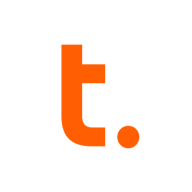

Teradata and ETL Solutions Transformation Manager compete in the data management and ETL space. Teradata holds an advantage in handling large datasets due to its scalability, whereas ETL Solutions Transformation Manager excels in data transformation capabilities.
Features: Teradata offers robust scalability, real-time analytics, and high-performance data processing, making it well-suited for large datasets. ETL Solutions Transformation Manager provides flexible data transformation, an intuitive interface for managing complex processes, and seamless integration with multiple data sources.
Ease of Deployment and Customer Service: Teradata utilizes a cloud-based deployment model, which enhances its scalability and integration with other services, supported by comprehensive assistance resources. ETL Solutions Transformation Manager offers a hybrid deployment model combining on-premise and cloud options, requiring more technical expertise for setup, with adaptable support options.
Pricing and ROI: Teradata involves higher initial setup costs justified by substantial ROI through advanced analytics and scalability. ETL Solutions Transformation Manager presents a cost-effective solution, appealing for transformation-focused businesses, potentially yielding higher ROI in transformation-heavy cases.


Teradata is a scalable data analytics platform designed to meet enterprise demands for large-scale data management and processing, focusing on performance, scalability, and security for complex query executions.
As a leading data warehousing solution, Teradata integrates advanced analytics enabling organizations to derive insights from massive datasets. It supports high-volume data workloads with its architecture optimized for analytical queries. Users benefit from its robust scalability, allowing seamless expansion as data grows. Teradata's SQL engine is compatible with a wide range of data types, ensuring flexibility in data analysis. With advanced security measures, it protects sensitive data across various environments, providing peace of mind to users handling critical information.
What are the most important features of Teradata?Teradata is widely used in industries like finance, telecommunications, and healthcare, where data-driven decisions are critical. Companies leverage its robust analytics capabilities to enhance customer experiences, streamline operations, and ensure compliance with regulatory requirements. In these sectors, quick access to data insights can significantly impact competitive advantage.
We monitor all Data Integration reviews to prevent fraudulent reviews and keep review quality high. We do not post reviews by company employees or direct competitors. We validate each review for authenticity via cross-reference with LinkedIn, and personal follow-up with the reviewer when necessary.